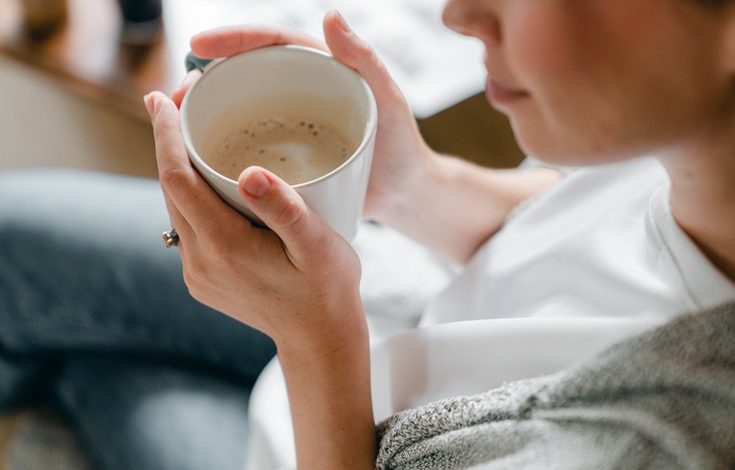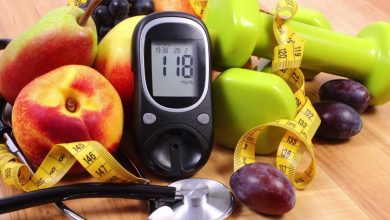More than 80% of Americans Drink Caffeine. These People Tried to Quit

Coffee, tea, soda, energy drinks, and other caffeinated beverages permeate daily life in the United States. Surveys consistently show that well over 80% of American adults consume caffeine in some form, often every day. It’s the go‑to stimulant for waking up, staying alert, and powering through work or study.
But what happens when habitual caffeine users decide to quit? Some trigger the decision because of health worries—like insomnia, anxiety, or elevated blood pressure—while others seek to break dependency, improve sleep quality, or simply experiment with sober living. Here, we explore who those people are, what motivated them, how the quitting process unfolded, and what lessons emerge from their stories.
Caffeine Consumption in America: A Snapshot
By conservative estimates, around 85% to 90% of U.S. adults consume caffeine daily from coffee, soft drinks, tea, energy drinks, chocolate, or medications. According to the National Coffee Association’s annual reports, approximately 62% of Americans drink coffee every day. When you add tea, soda, chocolate, and other sources, the total caffeinated‑beverage consumption easily exceeds 80%. In other words: caffeine is woven into everyday life for most Americans.
Why so many? Caffeine provides a mild cognitive boost—enhancing alertness, mood, concentration, and physical stamina. In busy households, workplaces, and social settings, it functions as both ritual and utility. Many users begin early, with morning coffee, and continue through the day—sometimes extending into late‑afternoon tea or soft drinks.
Motivations for Quitting
Among the millions of Americans who drink caffeine, a notable subset decide to stop or sharply reduce consumption. Interviews, blog posts, social media discussions, and personal accounts highlight several common motivations:
- Health concerns
- Insomnia and poor sleep quality are frequent complaints—especially when people consume caffeine later in the day or are more sensitive to its effects.
- Anxiety and jitteriness sometimes worsen with even moderate caffeine intake.
- Digestive discomfort or acid reflux can be triggered or aggravated by coffee and energy drinks.
- Elevated heart rate or mild arrhythmias lead some to cut back on stimulant intake.
- Dependency and tolerance
- Users notice they need higher doses to feel the same effect, or experience withdrawal symptoms such as headaches, fatigue, irritability, or poor concentration.
- Some grow frustrated or uneasy about relying on caffeine to function daily.
- Lifestyle experimentation
- People sometimes try going caffeine‑free for a month or more, as a form of reset or challenge.
- Others pursue holistic or “clean” living goals and remove processed stimuli.
- Pregnancy or medical advice
- Doctors often recommend reducing or avoiding caffeine during pregnancy, breastfeeding, or when chronic conditions require a stimulant‑free regimen.
Experiences of People Who Quit
To illustrate the quitting process, here are anonymized but representative stories drawn from blogs, social media posts, and interviews. Some have published public diaries or reflections on health‑and‑wellness platforms.
Sarah, 32, software developer (quittng for better sleep)
Background and motivation:
Sarah drank around 250 mg of caffeine per day—two cups of coffee in the morning, plus a mid‑afternoon soda. She struggled with staying asleep and often felt anxious by midday. A health blogger she followed suggested trying a full week without caffeine.
Quitting strategy and timeline:
- Day 1–2: Withdrawals hit—heavy headache, grogginess, low mood, minor irritability.
- Day 3–5: Headaches faded, energy dipped further, but sleep that night was deeper.
- Day 6–7: Energy begun to rebalance. She reported much clearer mornings, no midday crashes, calmed nerves, and better sleep duration.
Reflections:
- Her sleep latency (time to fall asleep) dropped from about 30–45 minutes to under 15 minutes.
- She noted a calmer baseline mood and fewer mid‑day sugar cravings.
- After two weeks she introduced decaffeinated coffee in the morning and herbal teas later—her body responded well.
James, 45, father and teacher (reducing anxiety and dependency)
Background and motivation:
James routinely drank espresso and energy drinks, totaling around 400‑500 mg a day. He found himself reliant on caffeine and developed tremors, rapid heartbeat during stressful periods, and increasing anxiety.
Quitting strategy and timeline:
- He resolved to quit cold‑turkey on a weekend break.
- Days 1–3: Severe headaches, fatigue, mood swings, and intense craving. He also struggled with concentration in his classes.
- Days 4–7: Headaches subsided but replaced by mild fatigue and occasional brain fog. He slept better, but early morning wakefulness felt unfamiliar.
- After one week: He began to feel alert on his own, anxiety levels dropped, and mood stabilized.
Reflections:
- James says he experienced a creeping improvement in baseline energy—no artificial peaks and crashes.
- He noted a 15 lb weight loss after quitting energy drinks (fewer empty calories), and he now adds whole‑leaf tea sparingly.
- He plans to maintain minimal caffeine, under 100 mg occasionally, to avoid regress.
Mia, 28, fitness coach (clean living experiment)
Background and motivation:
Mia consumed about 150 mg daily via green tea and matcha. She decided to go “caffeine free for 30 days” as part of a holistic health challenge—documenting on social media.
Quitting strategy and timeline:
- She reduced rather than stopped abruptly—had green tea one morning, then switched to herbal teas.
- Week 1: Mild fatigue first thing, but plenty of water and herbal blends helped.
- Week 2–3: She felt more attuned to her natural circadian rhythm—waking with daylight, sleeping more deeply at night.
- Week 4: Energy clear and stable. She resumed matcha in moderation.
Reflections:
- She discovered she was functioning at high energy levels naturally, without needing caffeine.
- She reported increased mindfulness in her routines and workout quality.
- At the end, she resumed moderate caffeine—usually one small matcha per day, always before noon.
Ravi, 38, engineer (pregnancy‑related cut‑back)
Background and motivation:
Ravi’s wife was expecting their second child. He drank coffee in the morning and soda in the afternoon, totaling about 200 mg daily. Doctors advised him to cut back to under 100 mg to be cautious and reduce physiological stress.
Quitting strategy and timeline:
- He switched to half‑caffeinated coffee, then pure decaf over two weeks.
- He also replaced afternoon soda with sparkling water or herbal tea.
- He did not experience withdrawal significantly—he tapered gradually.
Reflections:
- He says his energy remained adequate, though he felt more sluggish the first morning.
- His sleep improved and he noticed less palpitations and acid reflux.
- He still drinks black tea occasionally—keeping caffeine under safe limits.
Common Themes & Patterns
From stories like Sarah, James, Mia, and Ravi, a few clear themes emerge:
1. Withdrawal symptoms peak early, subside fast
Most people describe headaches, fatigue, irritability, or brain fog in the first 1 to 3 days. The intensity varies: heavy coffee‑drinkers or sudden beginners see the worst symptoms. But by day 4–5, many report significant relief as the body adjusts.
2. Energy rebalances over about a week
After the initial crash, individuals often feel more stable energy levels—no sharp highs or lows.
3. Sleep improves and anxiety often diminishes
Cutting out caffeine usually helps with ease of falling asleep, fewer nighttime awakenings, and reduced restlessness.
4. Reduced tolerance refreshes future enjoyment
Many quitters reintroduce caffeine at much lower doses—often under 100 mg daily—and rediscover sensitivity to its effects. A small cup can feel sharper, or a half‑dose suffices.
5. Decaffeinated or herbal substitutes help with transition
Replacing ritual—holding a warm cup, sipping a beverage—helps many through withdrawal. Herbal teas, decaf coffee, and flavoured water become stand‑ins.
6. Motivation matters
People who quit for medical advice (e.g., pregnancy or anxiety) or followed clear challenges (such as “30 days caffeine‑free”) often report smoother success. Quitting due to vague worries is sometimes harder.
7. Relapse is common—but usually to moderate use
A few people slide back into habitual intake, especially if under stress. But many adopt a “moderation” mindset, limiting intake to early mornings or occasional treats.
Practical Tips for Quitting
For those considering quitting or cutting back, here are practical tips based on experiences and expert suggestions:
1. Plan your taper or stoppage
- Gradual tapering—reducing by 25% every few days—can minimize withdrawal.
- Cold turkey works too, but expect more intense initial symptoms.
2. Stay hydrated
- Water, herbal tea, or electrolyte drinks help fight fatigue and headaches.
- Dehydration can compound withdrawal discomfort.
3. Prioritize sleep hygiene
- Going caffeine‑free helps—but also optimize bedtime routine: avoid screens, keep a regular schedule, and limit light exposure before bed.
4. Manage headaches and fatigue
- Over‑the‑counter pain relief (e.g. acetaminophen or ibuprofen) can relieve withdrawal headache—if medically appropriate.
- Gentle activity, fresh air, and naps (if possible) can help energy rebound.
5. Replace rituals
- If coffee or tea are habit cues, replace with herbal teas, chicory coffee, flavored water, or even decaf.
6. Track your intake and effects
- Use a journal or app to note caffeine amount, mood, sleep quality, headache severity, and energy levels.
7. Give it time
- Typical adjustment is one week—but full re‑regulation of cortisol and neurochemistry may take two weeks.
- Some people find that after three to four weeks, baseline alertness and clarity are significantly better.
8. Know your triggers
- Stress, social situations, or work deadlines often prompt relapse.
- Plan alternate coping strategies: a brisk walk, hydration, stretching, or breathing exercises.
9. Allow moderate reintroduction if desired
- If you re‑introduce caffeine later, aim for low doses, earlier in the day, and limit frequency.
- Many people find 50–100 mg once in the morning is enough—and that tastes better when intake is no longer habitual.
Science & Research on Caffeine Withdrawal
To support these personal stories, science offers consistent findings:
- The World Health Organization (WHO) and Diagnostic and Statistical Manual (DSM‑5) recognize caffeine withdrawal as a clinical syndrome: headache, fatigue, decreased energy, drowsiness, difficulty concentrating, irritability, depressed mood, or flu‑like symptoms—typically within 12–24 hours after last caffeine use, peaking at days 1–2, and lasting up to 7 days.
- Research confirms that reducing caffeine improves sleep latency (how fast you fall asleep) and sleep efficiency, especially if consumption occurs in the afternoon or evening.
- Studies show habitual caffeine users develop tolerance to some of its effects over time—meaning greater doses are needed to achieve the same level of stimulation.
- Psychological and physiological dependency can lead to a “cycle of fatigue,” in which people drink caffeine to counter daytime sleepiness, only to impair nighttime rest and perpetuate a cycle.
Who Might Benefit from Quitting or Reducing?
Though most people tolerate moderate caffeine without issues, certain individuals might especially benefit from cutting back:
- People with anxiety disorders or panic‑attack history
- Those suffering from insomnia, restless sleep, or circadian rhythm disruption
- Individuals with gastroesophageal reflux disease (GERD) or digestive sensitivity
- Those experiencing high blood pressure or palpitations possibly linked to stimulant intake
- People who notice crashing energy, headaches, mood swings, or dependency cycles
- Those pursuing a holistic or minimalist lifestyle, or experimenting with diet and wellness resets
- Pregnant or breastfeeding individuals (or partners supporting them)
Caveats and Misconceptions
- “Caffeine is addictive like drugs” is a common but exaggerated claim. While physical dependence can occur, caffeine typically doesn’t produce the compulsive behavior or severe health consequences associated with stronger substances. Withdrawal symptoms are usually mild and short‑lived.
- Not everyone will have dramatic improvements. Some people don’t experience profound changes in anxiety, sleep, or energy—they already press moderate intake or are less sensitive.
- Withdrawal isn’t a guarantee of permanent health benefits. If replaced with sugary sodas or large amounts of sugar, quitting caffeine could backfire financially or metabolically.
- Caffeine impacts vary: individual metabolism, genetics, sensitivity, and timing all play roles.
How to Monitor Progress
Here’s a sample tracker you could use to evaluate your own quitting or tapering experiment:
| Metric | Before quitting | Week 1 | Week 2 | Week 3+ |
| Daily caffeine (mg) | e.g. 300 | 150 / 75 / 0 | 0 | occasional low dose |
| Sleep latency | 30–45 min | 20 min | 15 min | < 15 min |
| Energy (peak vs trough) | Peaks and crash | Tired early | Balanced | Stable |
| Mood/anxiety | Moderate | Agitated | Calm | Calm |
| Headache days | Rare | Frequent | Rare | None |
| Concentration/focus | Variable | Foggy | Improving | Sharp |
| Physical symptoms (jitters, palps) | Sometimes | Frequent | Occasional | None |
Monitoring helps you see whether quitting is having the desired effect—and whether moderation or complete abstinence suits you best.
Realistic Expectations & Next Steps
- If you aim to quit completely, expect one to two weeks of adaptation, but know that benefits often persist long term. Many quitters reclaim natural alertness, sleep quality, and emotional baseline.
- If you aim to reduce intake, start with a taper or limited window (for example, no caffeine after noon), then gradually cut daily dose to under 100 mg if desired.
- If you relapse, reset with a clear goal or plan. Sometimes a structured challenge (“no caffeine for 14 days”) helps reset dependence.
- If you’re not seeing benefits, it doesn’t mean quitting was pointless—some people may simply tolerate caffeine without noticeable harm. In that case, moderate morning intake or even occasional indulgence may be reasonable.
- Consult a healthcare provider if you have underlying conditions (pregnancy, hypertension, anxiety disorder, gastrointestinal reflux, heart arrhythmias, etc.) before making major changes.
Final Thoughts
Indeed, more than 80% of Americans consume caffeine, and it’s easy to assume the stimulant is harmless—but for many, it has subtle effects on sleep, mood, anxiety, and dependency. The stories of those who choose to quit—from jittery morning coffee drinkers, anxious energy‑drink users, to wellness advocates resetting their habits—reveal a consistent pattern: an initial dip in energy and sharp withdrawal, followed by more stable alertness, deeper sleep, reduced anxiety, and perhaps a renewed appreciation for caffeine in moderation.
Quitting or cutting back on caffeine isn’t trivial, especially for long‑time, high‑intake users. Yet the temporary discomfort often yields meaningful changes in sleep, emotional balance, baseline energy, and overall awareness of how one’s body responds to stimulants.
If you’re thinking about cutting back or quitting yourself, you’re not alone—and many have navigated this shift successfully. Listen to your body, plan thoughtfully, and give yourself time to adjust. Whether you return to moderate use or go caffeine‑free, the experiment can lead to better rest, clearer mood, and a deeper understanding of your natural rhythms.




